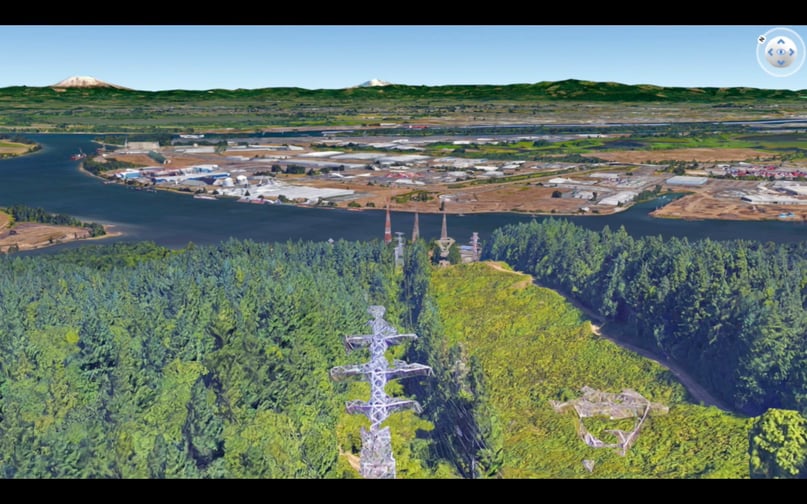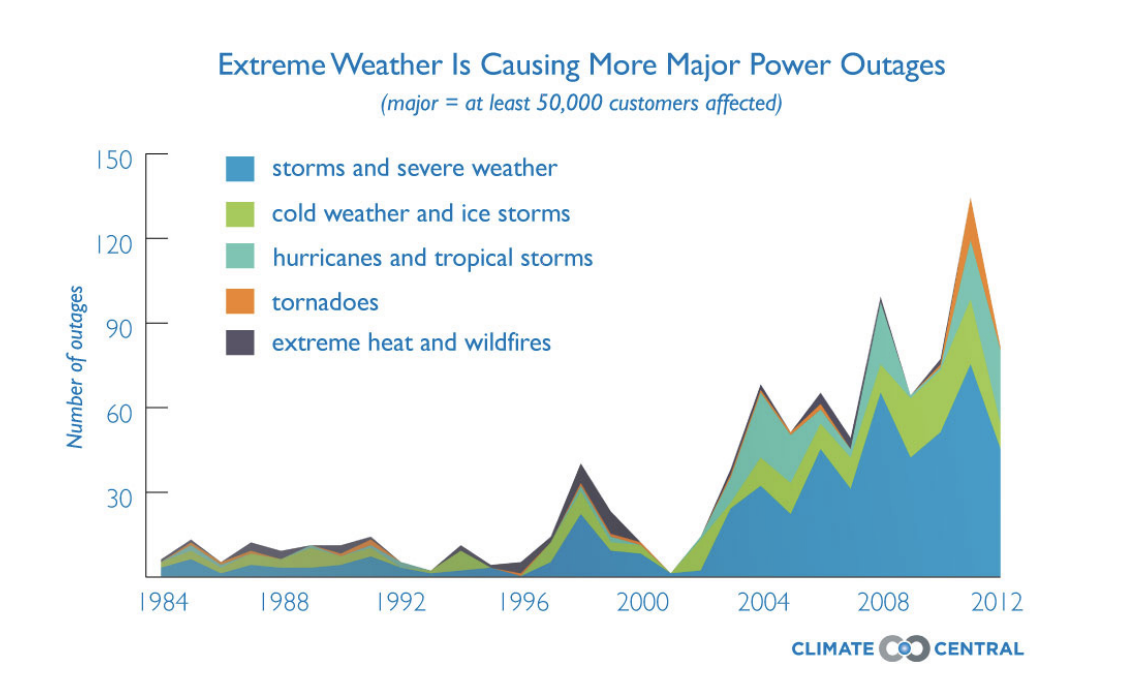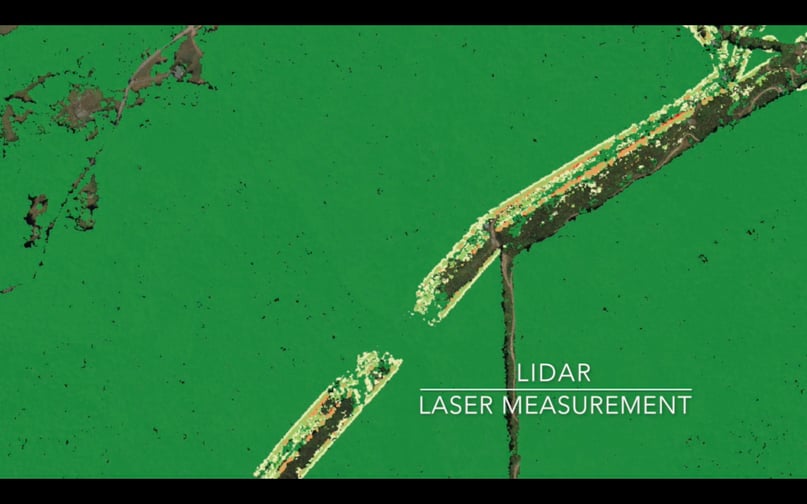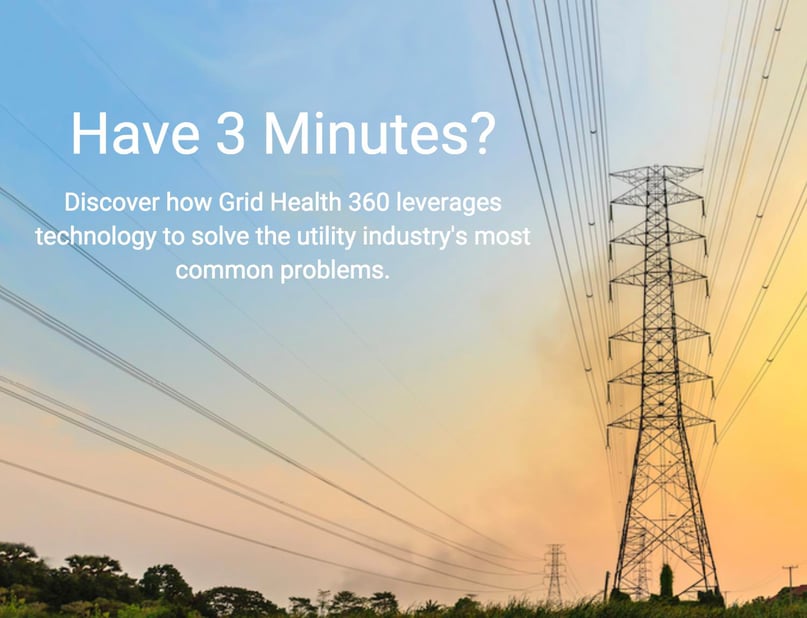
The State of our Energy Grid
The United States' infrastructure was once the best in the world. We built bigger bridges, more extensive highways, and had an electrical grid that was more expansive than any other developed nation. In fact, it has been argued that it was our unparalleled infrastructure that set the foundation for America's post-WWII booming economy.
However, a rapidly expanding population, worsening weather patterns, and the simple wear of time have stretched the U.S. infrastructure to - and in some cases, past - it's breaking point. This applies to the United States' energy grid as much as the rest of our infrastructure.
The 48 continental states' power grid is constantly operating near or at full capacity. 5,800 major power plants carry electricity to 144 million end-use customers - a number that is steadily growing. This strain caused 3,571 power outages in 2015, with an average downtime of 49 minutes.
This causes trouble for utility companies, as customer service has become more and more vital in recent years. It is also an issue for the U.S. economy. The ASCE estimated that between 2003 and 2012, "weather-related outages, coupled with aging infrastructure, are estimated to have cost the U.S. economy an inflation-adjusted annual average of $18 billion to $33 billion." This is because outages cause businesses to close, consumable goods to spoil, and endangers vulnerable citizens.
The annual cost of outages has skyrocketed in recent years, as more intense weather patterns batter the country. In fact, a recent Congressional Research Service study estimates the cost of weather-related power outages now reaches between $25 and $70 billion dollars every year.
Explore how Distributed Generation can provide power during times of crisis, among other pros > >
Fortunately, things have begun to improve in the last decade. In 2009 the government passed the American Recovery and Reinvestment Act (Recovery Act), which gave $4.5 billion dollars to invest in modern grid technology. The Recovery Act was responsible for the deployment of 343 advanced grid sensors, the installation of over six million smart meters, and the upgrade of 3,000 distribution circuits with digital technology.
Such an investment as created a pathway for advancements in our energy grid and further innovation. During Superstorm Sandy, for example, more than eight million people in New Jersey, Delaware, and Pennsylvania experienced a loss in power and the damages associated with these outages.
But with recent smart grid investments, it was 50,000 customers experienced decreased periods of outages due to recent investments of smart meter installations. The Philadelphia Electric Company (PECO) documented over 4,000 instances where smart meters were used to monitor when power was restored to customers, which saved both time and money by allowing the company to focus its efforts on the areas still without power.
Another company, the Potomac Electric Power Company (PEPCO) said its advanced meter infrastructure (AMI) allowed it to return power to over 100,000 homes within two days of Sandy. The "no power" signals given off by smart meters let PEPCO rapidly determine the location of outages, allowing the company to quickly resolve them.
These technological advancements are needed to ensure our energy grid is smart enough and durable enough to withstand worsening weather patterns and our growing population.
Recognizing this, utilities across the nation have also begun implementing development projects to begin updating the 640,000 miles of high-voltage transmission lines that criss-cross the continental United States. These projects often include implementations of smart meters and AMI's, bringing our power grid into the technological age.
However, there's a long way to go before the power grid of America fully realizes the benefits that technology has brought. In 2017, the American Society of Civil Engineers' Infrastructure Report Card gave our energy grid a D+ rating. This should not come as a surprise, however, as the majority of distribution, electric, transmission lines were constructed in the 1950's and 60's, and were given fifty-year life expectancies.
In short, our energy grid is old and outdated, but we have taken massive strides in the last decade towards mending our energy infrastructure. And as we continue to explore how technology can be applied to the distribution of energy, some very exciting possibilities are emerging.

High-Quality Asset Data
The most obvious and perhaps most valuable perk of technology, is information. The ability to gather, store, organize, and analyze information has forever changed, quite frankly, the entire world.
Simply put, Information is power. The power to better manage assets, to avoid outages, and to prevent disasters such as wildfires. Just because much of our energy infrastructure was built before the age of technology, does not mean utilities are stuck managing it that way.
Utility companies depend on assets: transformers, transmission lines, power poles, etc. Originally, tracking of these systems was done like everything else - with a pen and piece of paper. When computers rolled around, asset information was stored digitally, but 'smart' data still did not exist.
That is no longer the case. Satellites, LiDAR data, and the Internet of Things (IoT) have opened the floodgates of opportunities. Now utilities can use data management technology to truly manage their data, instead of merely storing it. With the resulting high-quality asset data, companies can keep better track of where their assets are, how old their assets are, when their last maintenance date was, and more.
Utilities make their most vital business decisions based on their assets. Since assets are driving investment decisions, the quality of asset data becomes the difference between a intelligent decision and a costly mistake. In additional to informing effective business decisions, accurate asset data can aid in the identification of unregistered solar panels or batteries, as well as help detect and mitigate fraud. It is therefore imperative that utility companies fully understand their assets, which can only occur when asset data is effectively managed.
Modernized Vegetation Management
Power lines have traditionally been managed by sending men in trucks to visually asset each power pole. Utilities will typically have cycles, where a power pole is inspected every few years. However, some trees grow faster than others, and a several year cycle does not take a diseased or dying tree into account. Every year that goes by without trimming is a year that a tree could grow too close to a power line and cause an outage.
Curious how Vegetation Management is Evolving? > >
Tree damage ranks second as the most common cause of power outages in the United States. This occurs when a tree or tree branch falls on a line, or when a tree limb comes in contact with a power line. Only severe weather causes more outages, and even then part of that damage is caused by trees being blown into power lines. Considering that between 2003 and 2012, 80 percent of power outages were caused by weather, avoiding even a portion of those outages would have a large effect.

photo courtesy Climate Central
On top of the damage that a power outage causes, we must also remember the danger of fire. Trees cause outages when colliding with power lines, and the combination of vegetation and electricity often spark fires. Fires sparked in the city cause damage to property and endanger individuals in proximity. And when fires are sparked in the wilderness, they can morph into massive wildfires before anyone has a chance to respond.
The Texas Wildfire Mitigation Project tracked over 4,000 wildfires that were caused by power lines in the state of Texas over a three and a half year period. The LA Times reported that power lines and electrical equipment are consistently one of the top causes of wildfires in California. In 2015, electrical issues caused 149,241 acres in California to burn, double the amount burned due to any other factors.
Preventing wildfires is about avoiding outages, protecting a utility's reputation and saving lives. This is why vegetation management is at the top of the priority list for energy companies. This is also why it is time to retire the outdated model of manually inspecting power lines every few years. Remember, this is the era of data. So let's use that data to our advantage!
Take LiDAR data as an example. Short for Light Detection and Ranging data, LiDAR data uses a pulsed laser to create a precise, 3D image of the area of interest. It is typically generated from a drone or aircraft.

Now, instead of a team spending hours driving around in a truck, utilities can gather LiDAR data for an entire area to gather an accurate picture of the status of their assets. This information can be used to detect vegetation that is at a high-risk of causing and outage or file.
However, the biggest conundrum of our era is this: having data does not mean you can do anything with it. Accurately leveraging this LiDAR data is still an area that utilities are grappling with. Unfortunately, many utilities gather LiDAR data only to let the information depreciate, as they lack the tools to effectively utilize this new form of information.
Utilities should invest in tools that give them the ability to detect high-risk foliage and leaning power poles. Only then will they practice true preventative management and be able to prevent disasters before they occur.

Posted by PDI Marketing Team
Pacific Data Integrators Offers Unique Data Solutions Leveraging AI/ML, Large Language Models (Open AI: GPT-4, Meta: Llama2, Databricks: Dolly), Cloud, Data Management and Analytics Technologies, Helping Leading Organizations Solve Their Critical Business Challenges, Drive Data Driven Insights, Improve Decision-Making, and Achieve Business Objectives.





